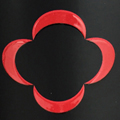Casa de Darei
by
Kathy Sullivan
 Summary: Casa de Darei, located in Portugal’s Dão region, is producing wines with organic grapes and a focus on grapes grown in the Dão DOC. The emphasis is on producing natural wines. In addition to vineyards and a winery, Casa de Darei has several multi-bedroom rental units available.
Summary: Casa de Darei, located in Portugal’s Dão region, is producing wines with organic grapes and a focus on grapes grown in the Dão DOC. The emphasis is on producing natural wines. In addition to vineyards and a winery, Casa de Darei has several multi-bedroom rental units available.
 Arriving at Casa de Darei on a cool, cloudy day, we discovered the winery sitting in the Dão countryside with several hectares of vineyards. Casa de Darei is located in a large, two-story white building with ornate decor around the windows. Nearby is a small stone chapel. A visit to Casa de Darei provides views of the winery with numerous pieces of vintage winemaking equipment. Look for large, red cement tanks, a basket press, barrels and much more. We were greeted by Carlos Ruivo who led us through the winery.
Arriving at Casa de Darei on a cool, cloudy day, we discovered the winery sitting in the Dão countryside with several hectares of vineyards. Casa de Darei is located in a large, two-story white building with ornate decor around the windows. Nearby is a small stone chapel. A visit to Casa de Darei provides views of the winery with numerous pieces of vintage winemaking equipment. Look for large, red cement tanks, a basket press, barrels and much more. We were greeted by Carlos Ruivo who led us through the winery.
Casa de Darei Vineyards
Carlos spoke about the vineyards. Casa de Darei has six hectares (15 acres) of vineyards which are farmed with organic methods. The winery also sources grapes for their entry level wines. All wines produced by Casa de Darei are Dão DOC. Grapes are harvested at five tons per hectare. Grape varieties in the vineyards include: Touriga Nacional, Tinta Roriz, Jaen, Alfrocheiro for the reds; Encruzado, Malvasia Fina, Bical, Cerceal, Verdelho and Arinto for the white grapes.

 Winery
Winery
The winery building was built in the 18th century. Inside the old stone walls add to the ambiance of the winery. The winery was purchased in 1997. Today Casa de Darei produces 60,000 bottles of wine. The winemaking is “very traditional and at times uses modern technology.” Crushing of the grapes is by foot. The winemaker uses cement vats that are sealed on the inside with epoxy. The cement concrete tanks keep a constant temperature. Fermentation takes place in open tanks. He said he wants “the elegance and freshness of the grapes.” Reserva wines are aged in vats for 18 to 24 months, followed by another year of aging in the bottle.

 Tasting Room
Tasting Room
Our group’s wine tasting took place in a large room with a long, rectangular table set up. The decor provided a lot of interest including images of indigenous grape varieties, paintings and white pillar candles. In addition to the ambiance provided by the decor, we met a very friendly and inquisitive winery dog.
Wines
Back labels on different wine bottles provided additional information, “A unique and authentic wine: an imprint of the Dão’s soul. We handcraft our wines and look for personality, elegance and structure. We work with a fantastic terroir, we try to enhance it: granitic soils, high thermal amplitude, altitude of our vineyards (+400m) and only Portuguese grapes. We favourite blends: it’s the traditional and most complete way of making balanced wines in Portugal in general and in the Dão region in particular.”
Lagar de Darei 2015 Branco, Dão DOC was a blend of Encruzado, Cerceal, Malvasia Fina, Bical and Gouveio. This wine with 13.5% alcohol was a yellow color. The wine offered notes of grapefruit and mineral. The crisp finish was of fruit and mineral.
Private Selection 2012, Dão DOC, was a blend of Encruzado, Malvasia Fina, Cerceal, Bical and Gouveio. The wine spent some time in oak. The wine was a dark yellow color and had 13.5% alcohol. There was an aroma of butterscotch and grapefruit. The taste had grapefruit and some butterscotch. The finish was crisp.
Private Selection 2015, Dão DOC, was produced with Encruzado, Cerceal, Malvasia Fina, Bical and Gouveio but was not aged in oak. This wine was a light yellow color. There was an emphasis of grapefruit on the aroma and taste. The finish was fruity with a hint of mineral on the aftertaste. This is an easily quaffable wine.
 Vinho Tinto Colheita 2013, Dão DOC, was a blend of Touriga Nacional, Jaen, Tinta Roriz, and Alfrocheiro. The wine with 13% alcohol was a translucent ruby color. The aroma reminded one of a wonderful black fruit salad. The taste offered blueberry, black cherry and baking spices The wine had a medium to full body with medium tannins. The fruity finish yielded to spices.
Vinho Tinto Colheita 2013, Dão DOC, was a blend of Touriga Nacional, Jaen, Tinta Roriz, and Alfrocheiro. The wine with 13% alcohol was a translucent ruby color. The aroma reminded one of a wonderful black fruit salad. The taste offered blueberry, black cherry and baking spices The wine had a medium to full body with medium tannins. The fruity finish yielded to spices.
Vinho Tinto Colheita 2011, Dão DOC, was a blend of Touriga Nacional, Jaen, Tinta Roriz and Alfrocheiro. The wine was an opaque dark ruby color with a red hue. The wine offered an aroma of black fruit. There was a taste of blueberry, cherry and cinnamon. The wine had a medium to full body with medium to bold tannins. The finish was crisp with fruit yielding to spice.
Reserva 2012, Dão DOC, was a blend of Touriga Nacional, Jaen, Tinta Roriz, and Alfrocheiro. The 13% alcohol wine was an opaque dark ruby color. The wine had a wonderful aroma of a black fruit salad. There were notes of blueberry, cherry and cinnamon. The wine had a full body and had bold tannins. The finish was fruity yielding to baking spices especially cinnamon.
Our final wine to taste was the 2004 José, Dão DOC, bottled in 2006, a blend of Touriga Nacional, Jaen, Tinta Roriz, and Alfrocheiro. The 14.5% alcohol wine was an opaque ruby color. The aroma had notes of flowers, black fruits and mushrooms. The taste was of violets, cherries, blueberries and cinnamon. The wine had a full body with bold tannins. The finish was fruity yielding to spice.
Wine enthusiasts will want to travel to Casa de Darei to discover the wines produced with grapes from the Dão DOC. Consider a stay at one of Casa de Darei rentals.
Casa de Darei
R. do Lugar da Gandra 6,
3530-239 Mangualde, Portugal
Article written April 2018.
Please support the following.
 |
||||
|
Portugal |
Spain and Portugal |
SmoothRed London, England, United Kingdom |

